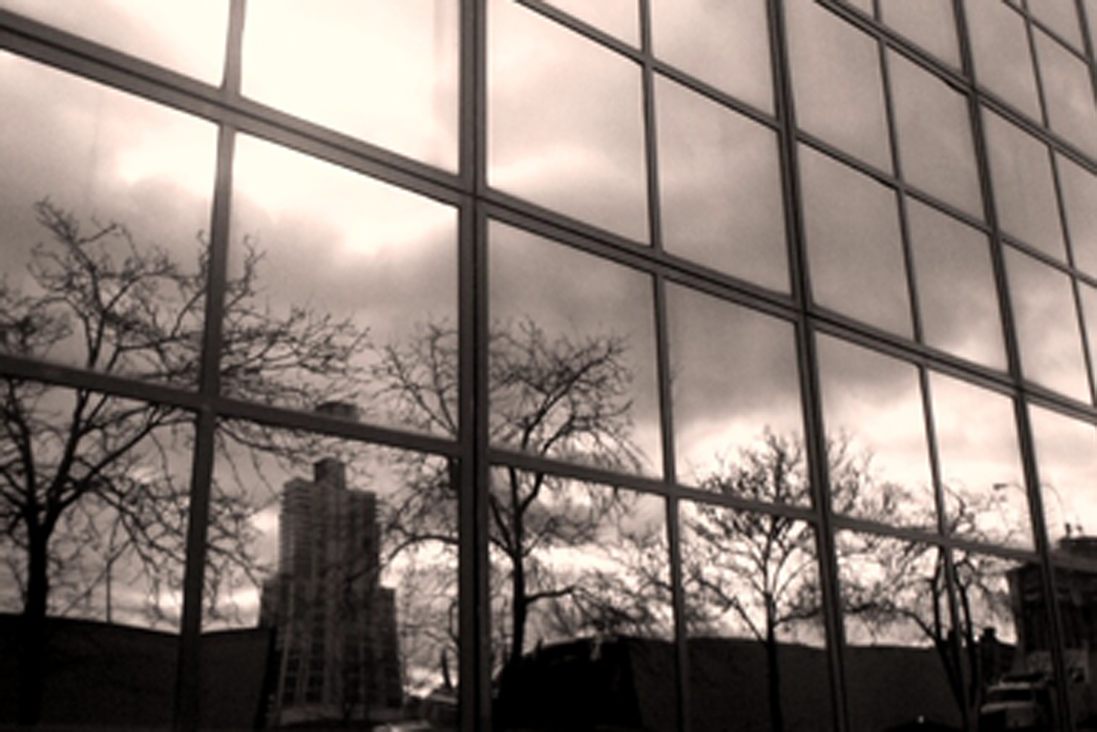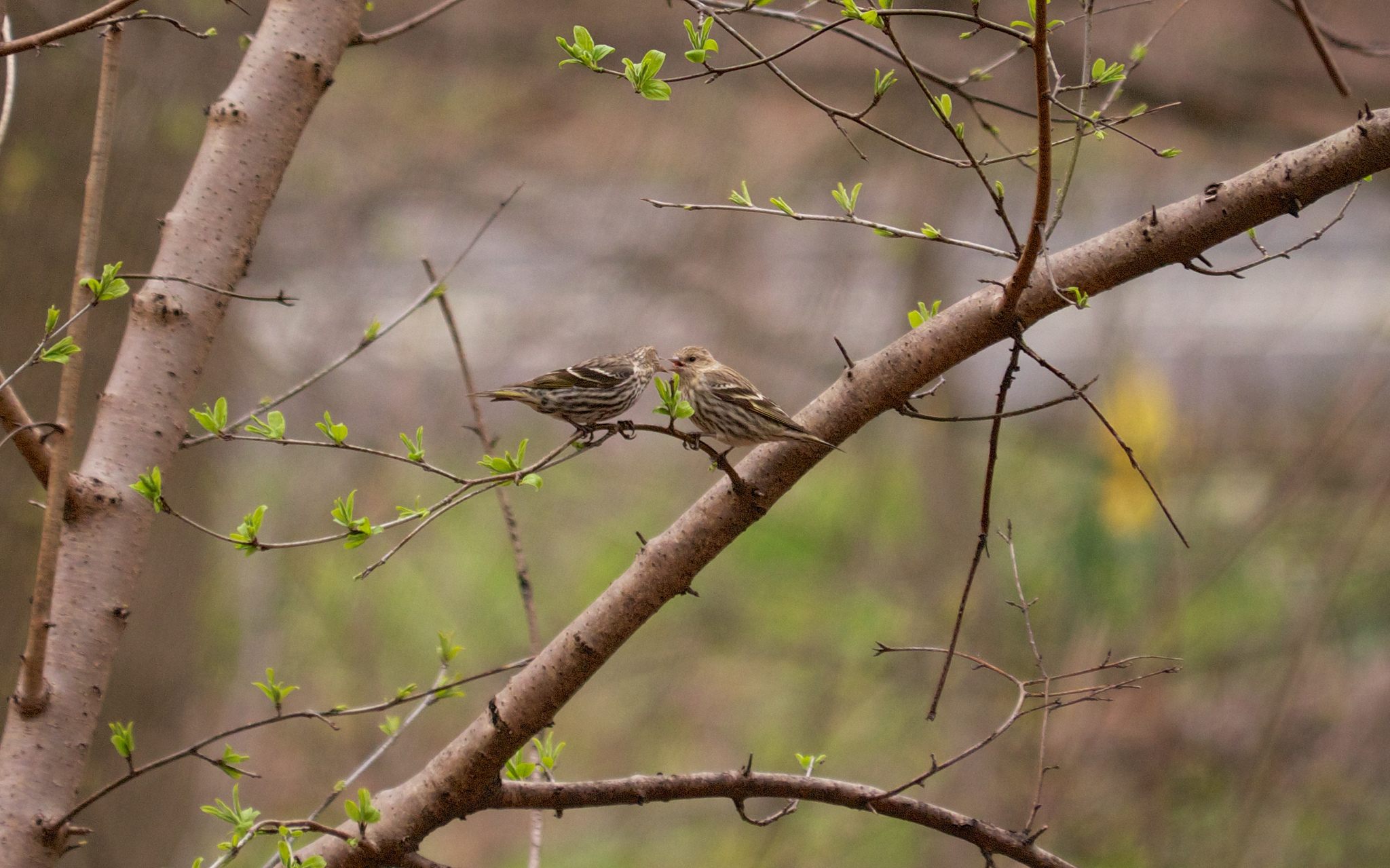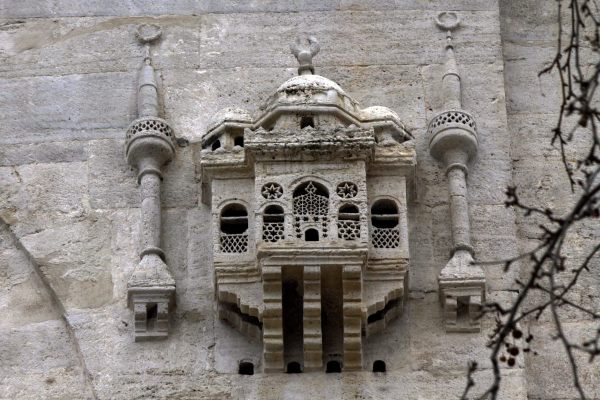The Quest To Make New York City Stop Killing Birds

A hawk is captured on camera, zeroing in on a drone. (Photo: Day Donaldson/flickr)
Recently, in Brooklyn’s Prospect Park, two red-tailed hawks were spotted swooping and diving above one of the meadows, screaming in agitation. They appeared to priming themselves to attack, although at first, it wasn’t clear who or what. And then the offender floated into view, buzzing and flashing its lights like a giant mechanical insect.
“I’m going to report them,” said a man who was squatting nearby, wielding a camera with a telescopic lens. “What they’re doing is illegal.” He was referring not to the hawks, but to three men who stood on the opposite side of the meadow, where they were manning the remote of a flying drone. Adjusting his lens, the man said if the hawks attacked the drone, they could injure their talons or wings on its whirring propeller. He had an aura of expertise.

Drones are illegal in Brooklyn’s Prospect Park. (Photo: Robyn Jay/flickr)
The man turned out to be Rob Bate, president of the Brooklyn Bird Club, board member of New York City Audubon, and he soon followed through on his promise. A few days later, dnainfo.com, a website covering local Brooklyn news, ran a story on Bate’s encounter, along with a photograph showing the hawks in “stoop” and “attack-mode” positions. It was part of Bate’s personal and public mission to raise awareness about what rogue drones do to the winged creatures of New York who were there first.
But drones are only one of the dangers that can befall a bird in the city.
New York City, beyond being a hub of finance and culture, is also a major hub for migratory birds who stop here every spring and fall on their bi-annual migrations. Millions of these migrants land in New York City’s parks, where they rest their wings for a spell before they continue on their journeys. But thousands of others die here, killed off by the very things that make New York’s skyline so striking–all that twinkling light and glass.

A red-tailed hawk in Brooklyn. Hawks will defend their territory against drones. (Photo: David Bone/flickr)
“NYC is devastating with the lights and the glass because we’re right on the Atlantic flyway,” Bate says. “Birds are just kind of motoring up the Atlantic seaboard, as they go up into Canada, and they come to a kind of in a crossroads in New York City before they fan out into Ontario and Nova Scotia.”
The journey is especially hazardous for songbirds, which fly by night, using nocturnal cues such as the moon, stars, and the earth’s magnetic waves to find their way. Not only does artificial light wash out these cues, it also draws birds into its orbit, where they can fly around in circles until they exhaust themselves or crash. Lighted cell towers, airports, suburban schoolyards, and beams of light that poke up into the sky are some of the worst offenders. But it was the World Trade Center, followed by the twin beams of light that replaced it in the wake of 9/11, that topped the list of the city’s most lethal bird sites. It also helped galvanize a movement to reduce the city’s light.
“New York City Audubon started monitoring the beams of the site around 2001. That’s when we saw the strong connection between light and bird migration,” says Susan Elbin, Director of Conservation and Science at New York City Audubon. “We’d see birds circling around and around and around in the next morning, I’m not sure if those were the same birds, but we’d find their bodies on the ground.” They died from exhaustion.

Artificial light of New York City can confuse migratory song birds. (Photo: Christine Wagner/flickr)
New York, of course, is not the only culprit. To put the problem into perspective, the Fatal Light Awareness Program, a Toronto-based conservation society that spearheaded the lights-out movement in 1993, offers a chilling analogy: “Across North America, more birds die from collisions each year than succumbed to the Exxon Valdez oil spill.” Scientists estimate that anywhere between 365 million to 988 million birds die annually after crashing into buildings and houses; using data collected from NYC Audubon volunteers, who have been counting carcasses and monitoring the skies for nearly two decades, Elbin estimates that 90,000 to 200,000 of those annual deaths occur in New York City.
Governor Cuomo recently took steps to reduce these collisions when he announced in April that the city would participate in the New York State Lights Out Initiative, joining the Audubon Society’s mission to dim urban glow in cities across the country. Under the program, state buildings will turn off “nonessential” outdoor lights from 11 p.m. through dawn during peak migration periods. Since the program was launched in 2005, iconic landmarks like the Chrysler building and Rockefeller Center have also turned off their lights. After years of writing letters and lobbying the state legislature in Albany, Elbin calls it a major win for the city’s bird advocates.
“People used to not to take us seriously, they thought it was just a couple birds dying. We’ve shown it’s a huge conservation issue with population level impact,” Elbin says. Dimming the glow, she says, can make a substantive difference. In Chicago, where the Audubon Society has a collision monitoring program, a landmark study conducted by the Field Museum showed that by turning the lights off in one building, the number of bird kills dropped by an average of 83 percent.

The glass exterior at New York’s Javits Center prior to renovation. This year new panels were inserted that have reportedly cut the bird death rate by 40%. (Photo: Rebecca Wilson/flickr)
Glassy buildings are another major killer, especially when they reflect rivers, parks, anything that a bird could mistake as habitat. That’s why the Javits Center, wrapped in glass that mirrored the Hudson, was one of the deadliest spots in the city. That changed this year, when a new renovation turned a building once known as “Darth Vader” into one of the more bird-friendly spots in the city. Designed with the knowledge that some birds see light in the ultraviolet spectrum, the architects chose panels embedded with patterns–wide stripes, or spiderweb-shaped designs–that are less noticeable to us, but visible to birds. The panels have reportedly cut the bird death rate by 90 percent.
Similar results have been reported at the Center for Global Conservation at the Bronx Zoo, a glassy building situated near the open aviary, where bird-safe windows appear to be saving lives. “It could be a disaster/death zone,” Elbin says. “But birds aren’t dying there.”
With New York City Audubon, the American Bird Conservancy, and the University of Fordham collaborating on research into make glass safer for birds, awareness and incentives are rising in other cities. San Francisco and Toronto have adopted bird-safety building standards and the U.S. Green Building Council has introduced a bird-safety credit as part of its environmental certification, called LEED.

Birds in Prospect Park. (Photo: Christopher Eliot/flickr)
Still, there’s plenty more work to be done. According to Elbin, one of the most lethal sites in New York these days is the Metropolitan Museum of Art, where thrushes, warblers and other kinds of birds are smashing into the gorgeous, reflective windows. Elbin says that while the museum is open to cooperating, no solution has yet been reached.
“Write a letter!” she says enthusiastically.
Back in the park, with the Audubon’s annual Christmas Bird Count now underway, it’s a moment to asses the skies in a quieter season. As the longest-running citizen science bird project in history, this annual wildlife census, fueled by volunteers, has provided scientists with robust data on birds and another major anthropogenic threat: climate change.
“Some people just think it’s a backdrop for their about their drones,” Bates says of Prospect Park. “But really we live in a very high-quality habitat with a very high concentrations of birds, migrants especially.” Considering the duel between hawks and drones and the presence of a rare and unexpected visitor, the painted bunting, whose arrival this year caught birders by surprise (it rarely makes it north of Arkansas), Bate says, “There are lots of exotic things going on here.” It would be a shame for the city to kill them.

























Follow us on Twitter to get the latest on the world's hidden wonders.
Like us on Facebook to get the latest on the world's hidden wonders.
Follow us on Twitter Like us on Facebook